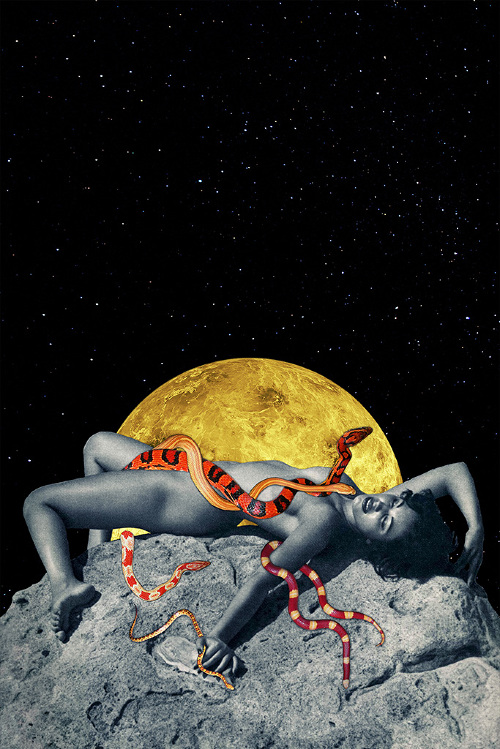RELATIONSHIP OF THE QUEER EARTH BODY TO THE QUEERNESS OF SPACE
Headlines today flash between fascinations with technological advancements and space exploration, and the immeasurable discontents with physical and psychological violence and inequalities here on our planet. People find themselves daydreaming about utopian futures beyond the limiting structures of an unsustainable Earth-bound existence, imagining realities for human relations outside of nauseating consumerist cycles and corporatized objectification.
Influenced visually and conceptually by Latin American and Spanish surrealism, Afrofuturism, queer utopianism, science fiction, a contemporary religious-like faith in astrophysics, and cosmologically-based spiritualities and traditions of magic, "Post-Apocalyptic Desire: Queer Bodies in Space" explores how artists position queer human bodies within new concepts of time and space.
Many recent post-apocalyptic space narratives, including Interstellar, Avatar, and The Martian, among countless others, feature the straight, white, American man as humanity’s singular brilliant savior, pushing his body to physical and mental limits to “win” a battle against the bending realities of space. This yawn-inducing trope leaves out many imagined futures where diverse groups of people work together to create new value systems and structures that disrupt the continued colonialist Earth narrative of an “us vs. them” or “precious, kyriarchal Earth vs. hostile, unpredictable space” scenario.
To contest these inadequate popularized motifs, this group exhibition will focus on representations of queer people, including people of color, women, and non-binary folk in post-apocalyptic space-age settings, in order to answer the following questions: How do artists imagine humans living in the liminal state between Earth-human and space-being? How will leaving Earth alter humans’ biology, behaviors, and emotions? How will it change our desires and how we relate to one another? How can space be a safe place to reorient human identities and relationships?
This theme of an otherworldly, futuristic yearning for connection between bodies—human bodies, bodies of space, bodies of time, and bodies of knowing—identifies outer space as an ideal queer environment. Just as queerness as an identity is unfixed and constantly influx, the ultimate unknowing and openness of space reflects limitless potential for humans’ exploration of all levels of psychological and physical desire and becoming.
Creating images of interconnected, polymorphic, makeshift bodies with space-existence agency, the ten proposed artists to be featured in the exhibition work in illustration, painting, installation, performance, and collage, including: Megan Burns, Paula Duro, Natalie Foss, Chitra Ganesh, Eugenia Loli, Wangechi Mutu, Rajni Perera, and Saya Woolfalk.
Intended audiences for the exhibition include, but are not limited to, Afrofuturists, science fiction authors and readers, romanticizing astrophysicists, people who are pro human involvement in space exploration, utopianists, people who wanted to be astronauts, INFJs, contemporary art enthusiasts, people who like portraits and images of people in artwork, intersectional feminists, sociologists and linguists, people who like to go to observatories or planetariums, socialists, Trekkies, and surrealists.
Programming can include film screenings of alternative sci-fi narratives, a queer space dance party, a sci-fi book fair, a panel discussion with academic experts and artists on exploring queered utopian desire in art, film, and other media.
Click here to view a visual presentation of this proposal. Research into the representation of a wider variety of queer bodies represented in space is ongoing and artist suggestions are welcome.
This exhibition was rated 17 / 532 proposals in apexart's 2016-17 Unsolicited Proposal Program









